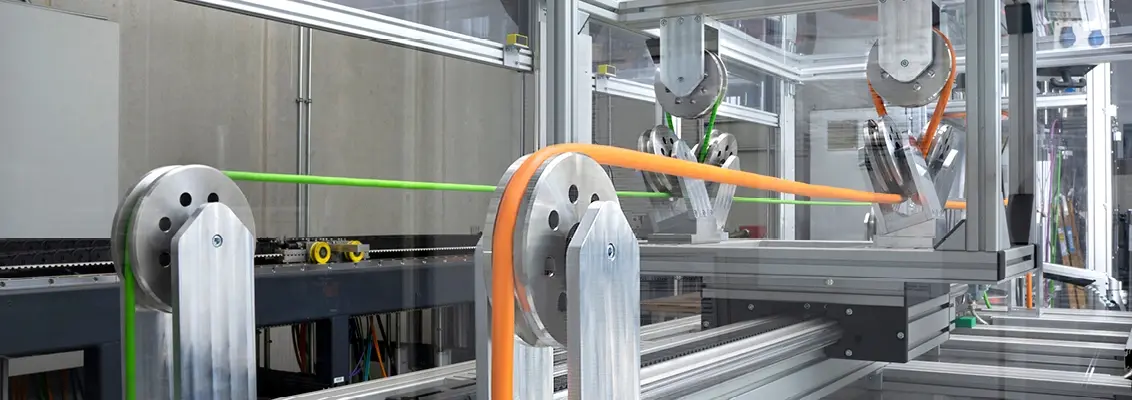Durable connections: All-weather and rubber cables for South African infrastructure
Understanding the need for all-weather and rubber cables

In South Africa, where diverse weather conditions and demanding infrastructure projects are commonality, the importance of durable and reliable cables cannot be overstated. Enter HELUKABEL South Africa, a leading international manufacturer and supplier of cables, wires, and cable accessories. With a commitment to quality and a legacy of innovation, we play a crucial role in ensuring the nation's infrastructure remains resilient, regardless of its environmental challenges.
This comprehensive article delves into all-weather and rubber cables, exploring their significance in South Africa's infrastructure landscape and shedding light on HELUKABEL South Africa's contributions to this vital industry.
Understanding the need for all-weather and rubber cables
Our nation's diverse climate, ranging from scorching heat to torrential rain and even occasional cold spells, places extraordinary stress on cables and wires used in infrastructure projects. Traditional cables may degrade rapidly under these conditions, resulting in costly maintenance and potential disruptions in critical services.
All-weather and rubber cables are specially designed to withstand these harsh environmental factors. They exhibit remarkable resilience to temperature variations, moisture, UV radiation, and abrasion, making them the ideal choice for South African infrastructure projects. These cables ensure reliable electrical connections and signal transmission, even in the most challenging conditions, ultimately contributing to the longevity and efficiency of the infrastructure.
HELUKABEL South Africa: A reliable partner
HELUKABEL South Africa is a trusted and innovative partner providing all-weather and rubber cables for South African infrastructure. Our commitment to quality and decades of experience makes us a go-to supplier for various industries, including mining, manufacturing, construction, and transportation.
- Product Excellence: We offer a diverse range of all-weather and rubber cables that meet and exceed industry standards. These cables are precision-engineered using high-quality materials that ensure durability and performance, even in the harshest conditions.
- Custom solutions: One of our key strengths is our ability to provide custom cable solutions tailored to specific project requirements. Our engineering expertise allows us to design cables that withstand extreme temperatures, chemical exposure, and mechanical stress.
- Innovation: We continually invest in research and development, staying at the forefront of cable technology. This commitment to innovation ensures our cables meet current industry standards and anticipate and adapt to future challenges.
- Local presence: With a local presence in South Africa, we are well-positioned to provide timely and responsive support to our customers. This local presence also means shorter lead times and reduced downtime in critical infrastructure projects.
Applications of all-weather and rubber cables in South Africa
Our cables find applications across various sectors, playing a vital role in the nation's infrastructure development.
- Mining: In the mining industry, where cables are subjected to extreme conditions, our all-weather and rubber cables ensure uninterrupted power supply, data transmission, and safety.
- Manufacturing: Manufacturing facilities rely on durable cables to maintain efficient operations. Our products support the smooth functioning of machinery and equipment, contributing to productivity and reliability.
- Renewable Energy: South Africa's growing interest in renewable energy sources like solar and wind power necessitates robust cables to connect and transmit energy from these sources to the grid. Our cables are well-suited for these applications, ensuring minimal power losses.
- Transportation: Transportation infrastructure, including railways and airports, depends on reliable cables for communication, signalling, and power supply. Our all-weather and rubber cables play a critical role in maintaining the integrity of these systems.
- Construction: In construction projects where cables are exposed to the elements and rough handling, our cables provide the durability required for power and data transmission.
Sustainable and environmentally responsible practices
We focus on our cables' performance and strongly emphasise sustainability and environmentally responsible practices. This aligns with South Africa's broader goals of reducing its environmental footprint and promoting green technologies.
Our commitment to sustainability includes:
- Recycling initiatives: We actively promote cable recycling, reducing waste and conserving resources.
- Environmentally friendly materials: We prioritise using materials with minimal environmental impact in our cable manufacturing process.
- Energy efficiency: We continually seek ways to reduce energy consumption in our operations, contributing to a lower carbon footprint.
Contact HELUKABEL South Africa for details
Contact a representative from HELUKABEL, South Africa, today if you want to know more about our offers on all-weather and rubber cables. Alternatively, please continue browsing our website for additional information on our offers.
Ask the expert

Günter Meyer is head of dynamic testing at our factory in Windsbach.
What is the minimum bending radius and what does this value tell me?
The minimum bending radius is the smallest possible radius to which the cable can be bent without damaging it. It is specified as a multiple of the cable diameter. The smaller the value, the more flexible the cable. There are several industry standards defining the minimum bending radii for different cable types. The values differ greatly, depending on whether the cable is used in a fixed or moving application. A drag chain cable of type MULTIFLEX 512-C-PUR UL/CSA, for example, has a minimum bending radius of 4 x d in a fixed application, but only 7.5 x d in moving one. The reason for this is that the bending stress in a permanently moving cable is significantly higher as the force and the direction of the bending motion are constantly changing. A suitable minimum bending radius is hence an important criterion when choosing cables and wires.
How can the flexibility of a cable be improved?
There are various ways to improve this, starting with using the best materials. In most cases, copper wires comprising of fine or finest stranded conductors are sufficiently flexible. Alloys can be used as well for some bespoke applications. Care must be taken that the insulation and sheathing materials are likewise flexible. The choice of materials makes a big difference, especially in applications at extreme temperatures. PUR or TPE sheathing are suitable for cold temperatures as they don’t get very stiff. The diameter and construction also have a major impact on the cable’s bending properties. The shorter the lay length, i.e., tighter twisting inside the core stranding, the more flexible the cable.
